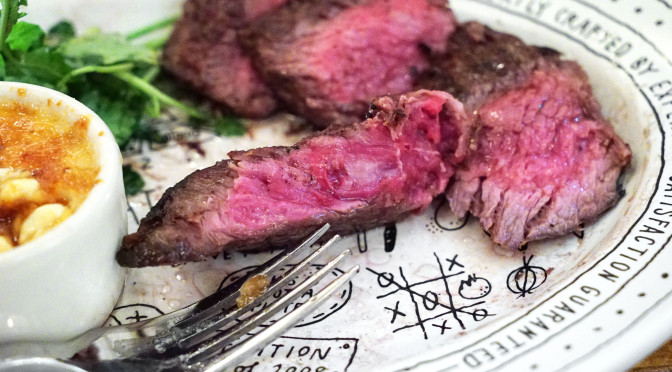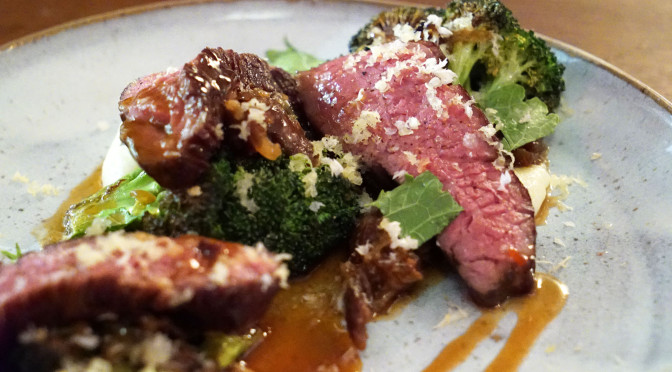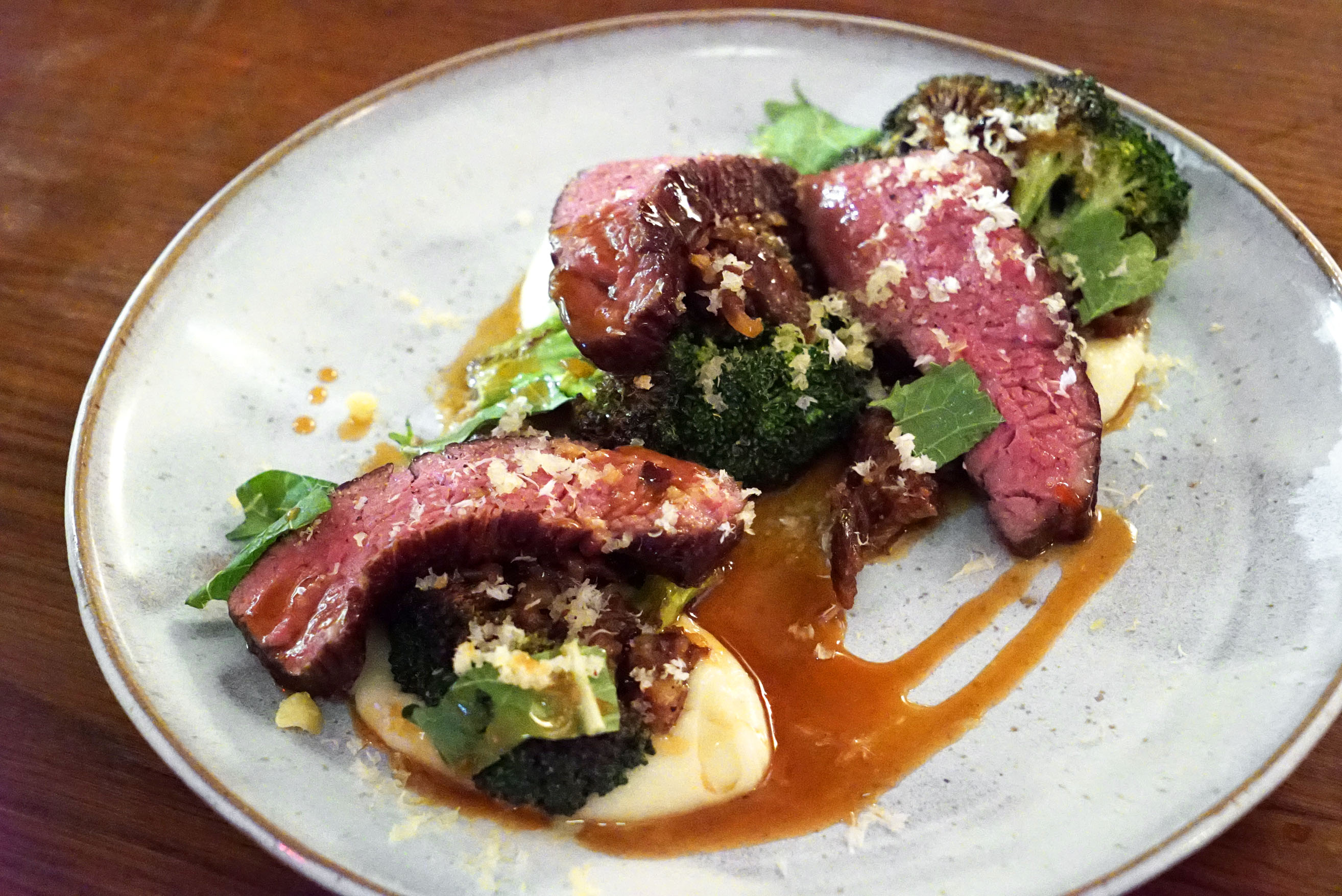The Bavette steak (France) is also known as flap steak (USA), vacio (Argentina) and sirloin tip (New England); it seems that different regions of the US and the world at large call it by different names. While the phrasing “flap steak” might sound revolting, I assure you that this cut is delicious when butchered and cooked properly. Anatomically close to the flank and skirt steaks, flap meat is technically found near the intersection of the bottom sirloin, short loin and flank parts of the animal, only it is more tender than both flank and skirt steaks due to being located on the inside portion of the diaphragm.
Here’s a video of it being butchered out:
It’s a slightly thicker cut than skirt or flank, which come from the plate and diaphragm areas nearby in the anatomy of the cow. The Bivette is more tender than both of them. It has less stringy, less chewy fat than skirt, as the striated muscle in Bivette cuts tend to have better quality marbling. It does have a direction or grain to the musculature, though, so cutting on the bias is the best technique.
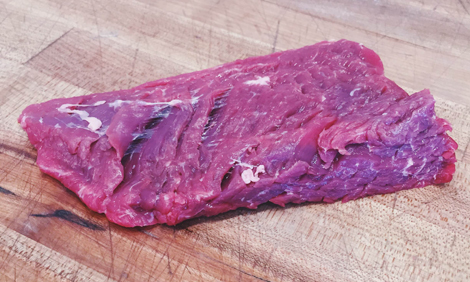
Similar in texture and taste to a hanger steak, the Bavette is best prepared with high, dry heat and served medium rare. I’ve tried this great, wallet-friendly cut at Quality Eats in Greenwich Village. Here’s a pic from that meal:
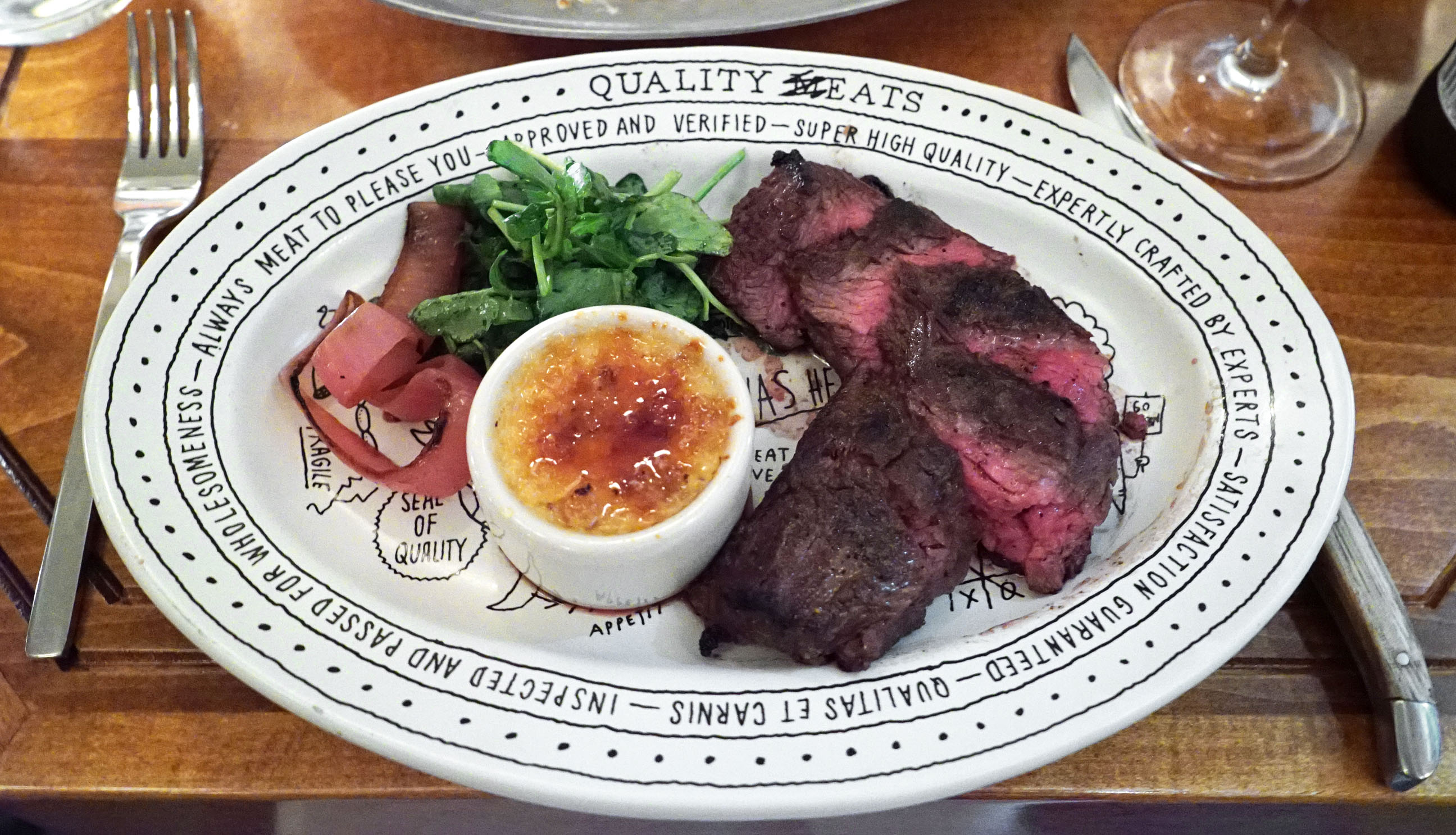
As you can see, it has a great crust on the outside with a nice pink medium rare center.
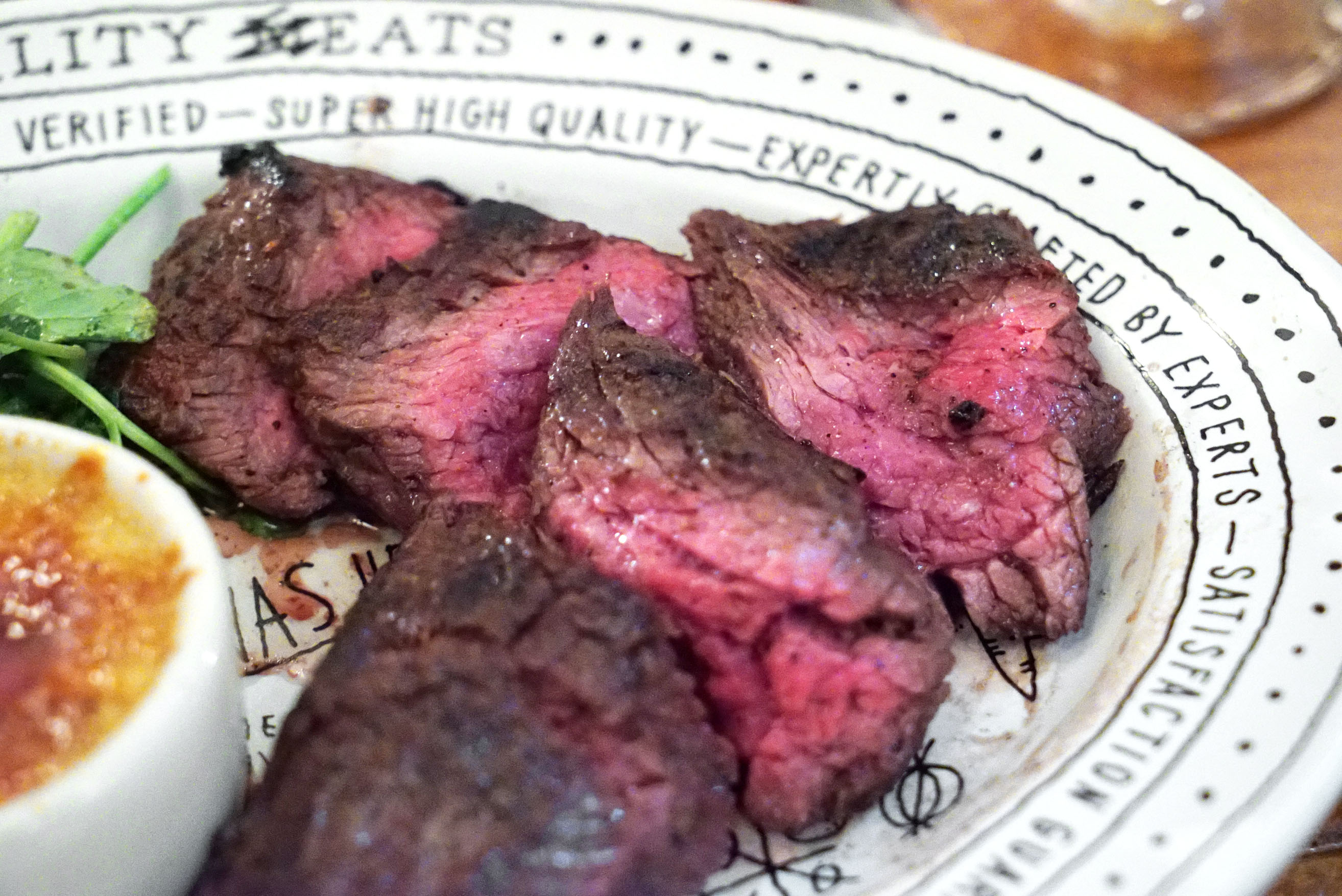
This was cooked perfectly, and I highly recommend heading down there to give it a try if you haven’t done so already.

